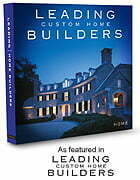Take the time to get the models that work best for you.
We find that most homeowners take plenty of time researching their kitchen appliances. The sheer number of models to choose from can feel overwhelming, and with the introduction of “smart” appliances, many other questions arise.
Appliance manufacturers offer styles and features for every taste and lifestyle, and they update models about as often as car makers do. Narrowing the choices can be a challenge.
Even though choices will depend on personal taste and how the homeowners intend to use the kitchen, they also want models that are well engineered, have solid warranties, look good with the cabinets and won’t get outdated over time.
When doing research, entering “2018 Appliance Trends” into a search engine will return links to dozens of articles and videos on the subject–this content is a great start, but much of it is driven by advertising. That’s one reason the “top selling” models and the hottest trends vary from article to article.
Other important content to look at is industry research. For instance, sales data from the Association of Home Appliance Manufacturers (AHAM) is a good reflection of homeowners’ priorities. AHAM provides data as well as overseeing safety, standards and advocacy for the industry.
According to the most recent data, the top priorities for buyers include time, convenience and status. Let’s look at a few examples.
Time. Today’s consumer can’t get enough of time-saving appliances. For instance, they have been flocking to induction cooktops, whose market share doubled in the six years from 2010 to 2016, jumping from 8% to 16%. AHAM credits that gain to shorter cooking times and more precise temperature control. Their pricing is higher than traditional gas or electric cooktops/ranges.
Convenience. Sales trends show that, besides wanting to save time, people also want appliances that require less effort to use. With that in mind, it’s no surprise that the yearly number of refrigerators sold with bottom-mount freezers doubled from 2009 to 2015. The fridge gets opened a lot more than the freezer and most of us don’t want to bend over whenever we’re looking for a container of milk. Having water and ice dispensers in the door also cuts down on the number of times the refrigerator is opened.
Status. The clearest sign of this priority is the growth of stainless steel appliances. About half of dishwashers and three-quarters (76%) of bottom-mount refrigerators shipped in 2015 had stainless steel finishes. Five years before, the percentage for refrigerators was just 44%. This has nothing to do with durability, as today’s factory-applied color finishes are durable, attractive and able to stand up to anything a home cook can dish out. But stainless steel has become a status symbol, and as such it appeals to the highest number of future buyers.
By the way, some homeowners don’t understand that not all stainless is the same–hues can be warmer or cooler depending on the nickel content. That makes it smart to take a sample of the cabinet or wall color to the appliance showroom to see which stainless makes the best match.
The most effective way to sort through all the available choices and make the right ones is to work with the appliance vendor, the interior decorator and the kitchen designer. It’s also wise to start this process as early as possible, as homeowners who can take their time in selecting appliances will likely make better decisions. It’s important to make the final selections before the cabinets are ordered so the kitchen designer can make sure everything fits together correctly.









